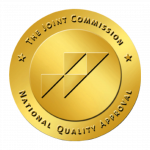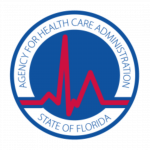When most people think about Bipolar Disorder, they envision rapid mood swings. However, depending on a person’s symptoms, there are many different types of mood conditions. Not all of these categories contain the spikes of mania and lows of depression. A psychiatrist or mental health specialist may only diagnose a mood illness. It can take years of observation to obtain a correct diagnosis.
Bipolar Disorder I
Bipolar I condition necessitates signs that follow the full criteria for a manic episode. You may not have to be depressed to be diagnosed with Bipolar I. Although many people who have the disorder have both instances of mood episodes.
At least three of the following signs must be present in a manic episode:
- increased talkativeness
- heightened self-esteem or grandiosity
- reduced need for sleep
- a rise in goal-directed activity, resources, or irritability
- racing thoughts
- poor concentration
- increased willingness to take risks (spending money, risky sexual behaviors, etc.).
Mania is much more serious than a quick blast of energy, enthusiasm, or happiness. It often causes issues at work, in education, and in relationships, and it can necessitate hospitalization in some situations. For people with Bipolar I, a manic episode is just as likely to be marked by an irritable mood as it is by an elevated mood. Never presume a manic episode isn’t present simply because a person doesn’t seem relaxed or enthusiastic.
Bipolar Disorder II
To be diagnosed with Bipolar II Disorder, a person may have had a depressive episode, as well as a milder type of mania known as hypomania. An individual suffering from mania may experience manic symptoms but will be able to carry on with daily tasks. They may even see an improvement in work results or other goal-directed behavior. The elevated mood, on the other hand, is not serious enough to necessitate hospitalization or cause a major disturbance at home or work.
An individual may have 5 or more of the following symptoms to meet the criterion for a depressive episode:
- depressed state of mind
- Sleep patterns have changed.
- alterations in eating habits
- a feeling of exhaustion or a lack of energy
- loss of enjoyment of previously liked activities
- agitation or a slowing down
- Guilt or a sense of inadequacy.
- indecision or inability to concentrate
- thoughts of suicide
Many patients with Bipolar II Disorder are diagnosed with depression when they refuse to report their doctor’s high mood signs of hypomania. People with Bipolar II may also be more prone to drug abuse and eating disorders. They are often more likely to find a parent with a mental disorder in their extended families. To recap, Bipolar I needs a manic episode that may also involve depression. A depressive episode, as well as a hypomanic episode, are needed for a Bipolar II diagnosis.
Do You Have Bipolar Disorder?
If you’ve had bipolar and depressive symptoms for many years yet haven’t met the criteria for a complete manic or depressive episode, your doctor may diagnose you with Cyclothymic Disorder. Childhood traumatic events are risk factors for developing bipolar disorders. Any patients with Bipolar Disorder also follow the criterion for rapid cycling, which includes four mood periods of depression, mania, or hypomania within a year. Both types of Bipolar Disorder can cause rapid cycling.
Since your Bipolar disorder can influence the type of therapy and prescription prescribed by your psychiatrist, it is important that you report all mood signs to your doctor. Treating depression rather than mania can raise the likelihood of a mania episode or suicidal thoughts and behaviors, so it is important to monitor all highs and lows. Since drugs and alcohol may induce episodes of mania or depression, you will need to undergo detoxification before receiving a diagnosis.
Keeping a daily diary of your mood, energy level, attention span, and habits will assist you in receiving the most precise diagnosis. Staying informed and patient with the diagnostic procedure often improves the chances of controlling symptoms and reducing the occurrence and severity of mood changes. It is easy to treat mental illness and live a complete and goal-directed life with the right team of counselors and the right resources for keeping track of the symptoms. What actions will you take right now to connect with the best resources for your mind and body?














